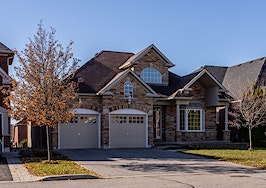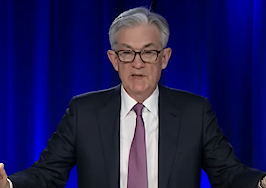Pending home sales rallied in October after a significant slump the month before, as the housing market kept churning along on one of its strongest years in recent memory.
The number of contract signings in October rose 7.5 percent after slipping in September, resting a bit below where they were the same time last year, according to the latest report from the National Association of Realtors. The previous month, pending sales had declined by 2.3 percent.
“The notable gain in October assures that total existing-home sales in 2021 will exceed 6 million, which will shape up to be the best performance in 15 years,” NAR Chief Economist Lawrence Yun said in a statement.
The trade group’s Pending Home Sales Index — which uses contract signings as a leading indicator for future home sales — was 125.2 last month, up 7.5 percent from the month before but down 1.4 percent from this time last year.
According to the group’s latest forecast, home price growth is expected to slow over the next few months amid a continued rise in mortgage rates. The market itself is expected to remain “robust,” according to the report.
“This solid buying is a testament to demand still being relatively high, as it is occurring during a time when inventory is still markedly low,” Yun said in the statement.
Buyers in October may have been spurred to act by multiple factors, including rents that are increasing quickly throughout the country, and mortgage rates that are widely expected to rise from this point forward, Yun said.
As prices skyrocketed during the pandemic, federal agencies have been forced to update their standards to reflect the new market realities, according to Realtor.com Manager of Economic Research George Ratiu.
The Federal Housing Finance Agency updated the loan limits for Freddie Mac and Fannie Mae-backed mortgages. In most parts of the country, the limit will jump from $548,250 this year to $625,000 in 2022.
“The higher limits will give buyers who face higher-priced homes the opportunity to qualify for a conforming mortgage, which provides for lower down payments and better mortgage rates, among other benefits,” Ratiu said in a statement. “However, over the longer term, housing needs a larger investment in new construction to overcome the significant supply shortage.”
Regional rebound
The Midwest led the nation in pending home sale growth, but all four of the regions tracked by NAR participated in the rebound.
Midwestern states saw pending home sales rise 11.8 percent from September to October, and were up 5.1 percent from their October 2020 levels.
The South was also up slightly from last year, posting a month-over-month gain of 8.0 percent.
In the Northeast, pending home sales rose 6.9 percent from September. Still, this number was 10 percent lower than where it was a year ago.
The West also saw monthly gains that fell short of last year’s mark, with a month-over-month rise of 2.1 percent. Pending sales in western states were down 6.2 percent year over year.









